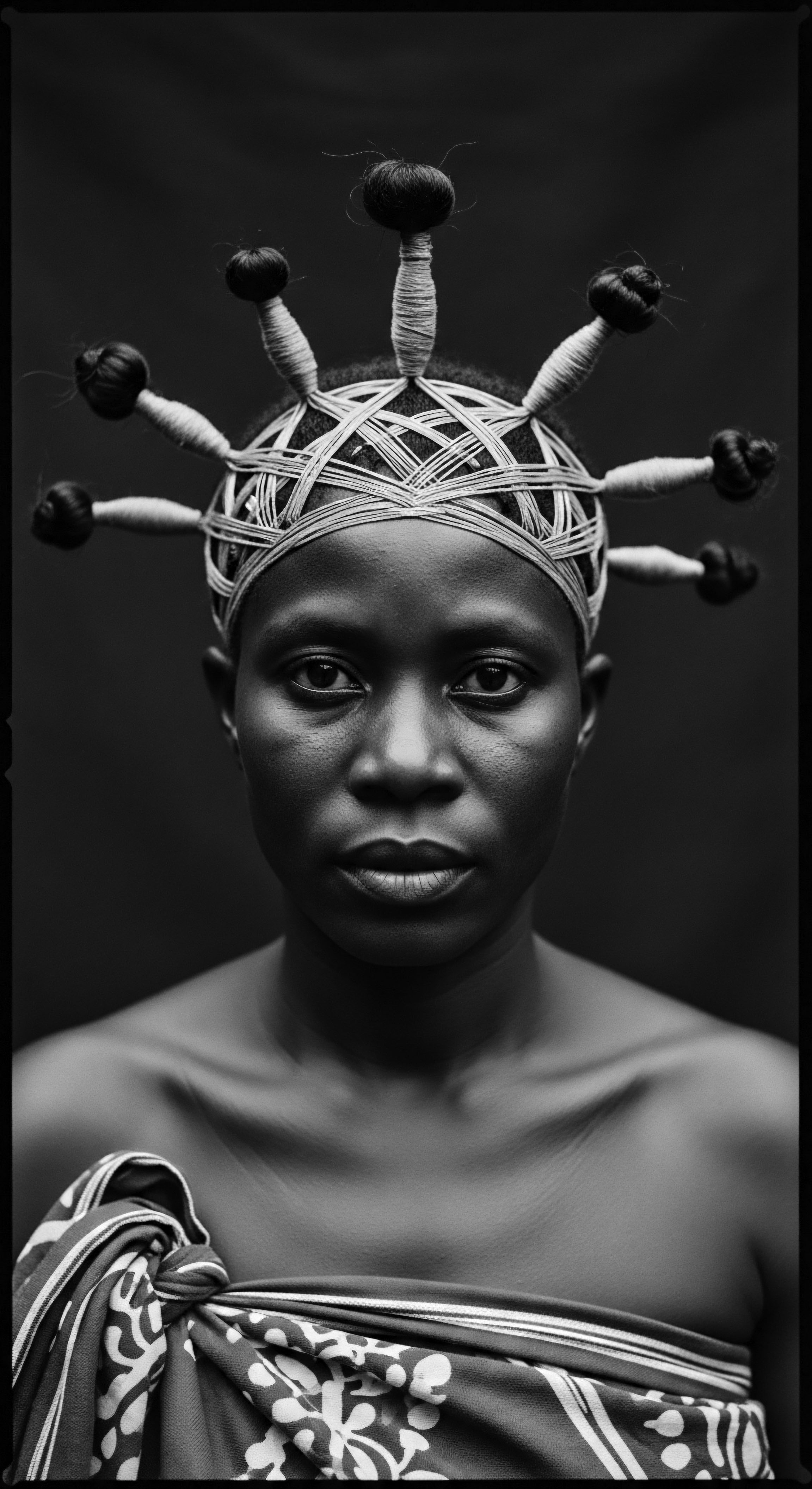
Fundamentals
The concept of “Crown Significance” within the expansive panorama of textured hair, particularly within Black and mixed-race experiences, denotes a profound understanding that extends far beyond mere cosmetic appearance. It is an acknowledgment that the hair, particularly at the apex of the head, acts as a physical and spiritual nexus, holding within its intricate patterns the echoes of ancestral wisdom, communal bonds, and an individual’s enduring identity. This intrinsic meaning, this deeply felt connection to what grows from one’s scalp, has been a constant through generations, a silent language spoken through coils, curls, and kinks.
For many who carry this heritage, the hair is regarded not simply as a biological outgrowth, but as a sacred extension of the self. In countless African societies, the head has been revered as the most elevated part of the body, believed to be the entryway for spiritual energy and the seat of individual destiny. (Afriklens, 2024, alteculture.com, 2025).
This perspective casts the hair upon it as a living antenna, a conduit to the divine and to the lineage of those who came before. Understanding this initial layer of meaning is essential, for it provides the foundational bedrock upon which the entire edifice of textured hair heritage is built.
The Crown Significance is a profound recognition of textured hair as a spiritual anchor and a living archive of heritage.
Across diverse cultures, hairstyles have long served as powerful non-verbal communicators. They have conveyed information about an individual’s age, marital status, social standing, tribal affiliation, and even spiritual beliefs. (Khumbula, 2024; The Kurl Kitchen, 2024). This deep connection imbues hair with a resonance that transcends the superficial.
The choice of a particular style, the tools used in its creation, and the communal practices surrounding its care all serve to reinforce this understanding. Indeed, the very act of maintaining one’s hair becomes a ritual, a tender acknowledgment of this inherent significance, a practice that links the present moment to a vast, historical continuum.
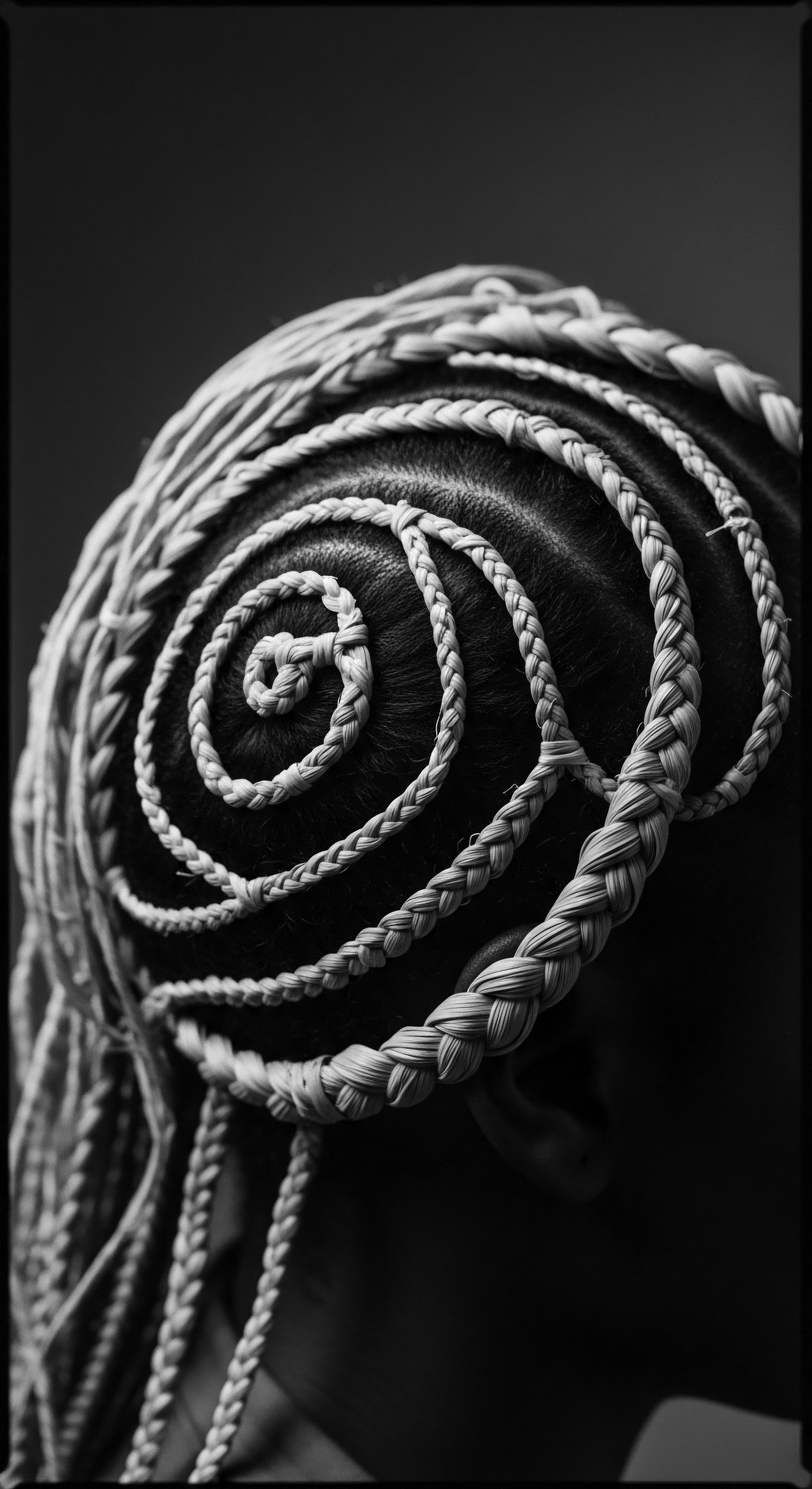
Elemental Biology and Ancestral Echoes
The biological architecture of textured hair itself, with its unique follicular shape and growth patterns, lends itself to the intricate artistry that has characterized its care across millennia. The spirals and undulations found in Black and mixed-race hair naturally lend themselves to protective styles and sculptural forms that have been both aesthetically captivating and deeply symbolic. This elemental reality allowed for the development of sophisticated styling techniques, passed down through generations, each contributing to the collective knowledge of what it means to carry this particular genetic endowment.
An interpretation of Crown Significance considers the biological particularities of textured hair as a foundational component, allowing for styles that are unique to this hair type. The natural curl pattern, often referred to as kinky or coily, provides the structure necessary for braids, twists, and locs to hold their form and offer protection to the scalp. This biological gift was, and continues to be, honored through ancestral practices that intuitively understood how to nurture and adorn these distinct textures.
- Porosity ❉ The ability of hair to absorb and retain moisture, a characteristic often variable in textured hair, was intuitively addressed through traditional oiling practices and natural emollients drawn from the land.
- Density ❉ The number of hair strands on the scalp, which can range from sparse to very dense, influenced the complexity and longevity of historical styles, from tightly packed cornrows to voluminous ‘fros.
- Elasticity ❉ The hair’s capacity to stretch and return to its original state, a key indicator of its health, was maintained through gentle handling during ancient braiding and detangling rituals.
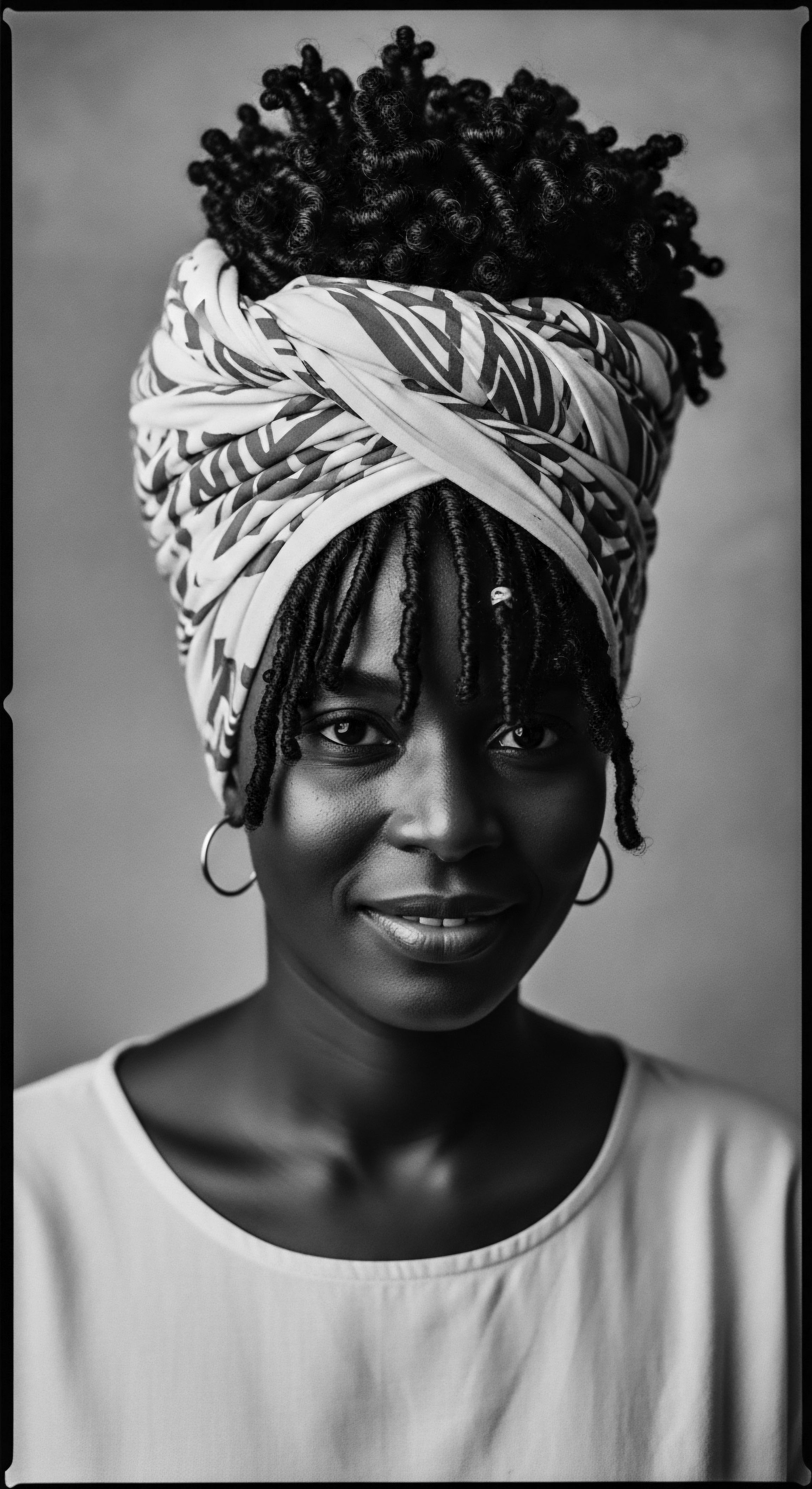
Intermediate
Moving beyond the foundational understanding, the intermediate consideration of Crown Significance deepens into its historical journey and the resilient ways it has shaped identity in the face of immense challenge. The meaning inherent in the hair’s position atop the head, once a universally revered aspect in many ancestral societies, underwent a drastic redefinition during the transatlantic slave trade and subsequent colonial eras. This period marks a painful, yet ultimately defiant, chapter in the story of textured hair.
During the forced displacement, captured Africans often had their heads shaved upon arrival in the Americas, a deliberate, brutal act aimed at stripping away their identity and severing their connection to homeland, lineage, and spirit. (Afriklens, 2024; Gale Review, 2021; Black Hair, 2023). This act, intended to dehumanize, paradoxically underscored the profound symbolic weight the hair carried; its removal was a calculated attempt to dismantle the “crown” in a deeply personal and collective sense. Despite these efforts, the spirit of Crown Significance persisted, finding new expressions as a quiet, yet potent, form of resistance.
Crown Significance holds a defiant spirit, transforming from a marker of identity into a tool of resilience against historical oppression.
The resilience of Black and mixed-race communities meant that traditional hair practices, though often driven underground, never truly vanished. Hairstyles became covert canvases for communication and cultural preservation. For instance, in colonial Colombia, enslaved Africans ingeniously used cornrows to encode messages and even maps, charting escape routes to freedom, demonstrating hair’s power as a silent language of liberation.
(Ancient Origins, 2022). This powerful historical example highlights how the Crown Significance transformed from a symbol of status to a tangible tool of survival and rebellion, a testament to the enduring ingenuity embedded within ancestral knowledge.
The period following formal slavery and colonialism saw the continued suppression of textured hair, often through the imposition of Eurocentric beauty standards. Straight hair was deemed “professional” and “good,” while kinky or coily textures were pathologized and deemed “unprofessional” or “bad.” (Black Hair, 2023; Psychology Today, 2023). This societal pressure forced many to chemically alter their hair, sometimes at great physical and psychological cost. Yet, the deep-seated cultural memory of the hair’s inherent worth continued to ripple through generations, fueling movements for reclamation.

Reclaiming the Crown ❉ A Movement for Selfhood
The mid-20th century witnessed the rise of the Natural Hair Movement, particularly during the Civil Rights era, where the Afro became a powerful symbol of Black pride, self-acceptance, and defiance against oppressive beauty norms. (Nuevo Noir, 2024). This resurgence represented a profound collective act of reclaiming the Crown Significance, asserting that natural textured hair is not only beautiful but also a political statement and a connection to an unbroken lineage of identity and heritage.
This reclamation was not merely aesthetic; it carried significant psychological and social dimensions. Choosing to wear one’s hair in its natural state became an affirmation of self-love and a rejection of imposed standards. The concept of hair as a “crown” resurfaced with renewed vigor, serving as a powerful metaphor for authority, sovereignty, and dignity. (Creed & Cloth, 2024).
Modern manifestations of Crown Significance are evident in the resurgence of traditional styles like braids, twists, and locs, often reimagined with contemporary flair. These styles are not simply fashion statements; they are declarations of cultural pride and self-expression, bridging ancient traditions with modern aesthetics. (The Kurl Kitchen, 2024).
| Era/Context Pre-Colonial Africa |
| Meaning of Hair Identity, social status, age, marital status, spiritual connection, tribal affiliation. (Afriklens, 2024; Black Hair, 2023) |
| Manifestation of Crown Significance Intricate ceremonial styles, communal braiding rituals, hair as a spiritual conduit. (Khumbula, 2024) |
| Era/Context Transatlantic Slave Trade/Colonialism |
| Meaning of Hair Target of dehumanization, symbol of lost identity, covert communication. (Gale Review, 2021; Ancient Origins, 2022) |
| Manifestation of Crown Significance Forced head shaving as a means of control; cornrows encoding escape routes. |
| Era/Context Civil Rights/Black Power Era |
| Meaning of Hair Symbol of defiance, Black pride, political statement. (Nuevo Noir, 2024) |
| Manifestation of Crown Significance The Afro as a powerful emblem of self-acceptance and cultural identity. |
| Era/Context Contemporary Period |
| Meaning of Hair Personal expression, cultural pride, ancestral connection, mental well-being. (Maharaj, 2025; Creed & Cloth, 2024) |
| Manifestation of Crown Significance Natural hair movement, protective styles, reinterpretation of traditional aesthetics. |
| Era/Context The enduring journey of hair in Black communities demonstrates its unwavering connection to heritage and its ability to adapt and inspire across time. |
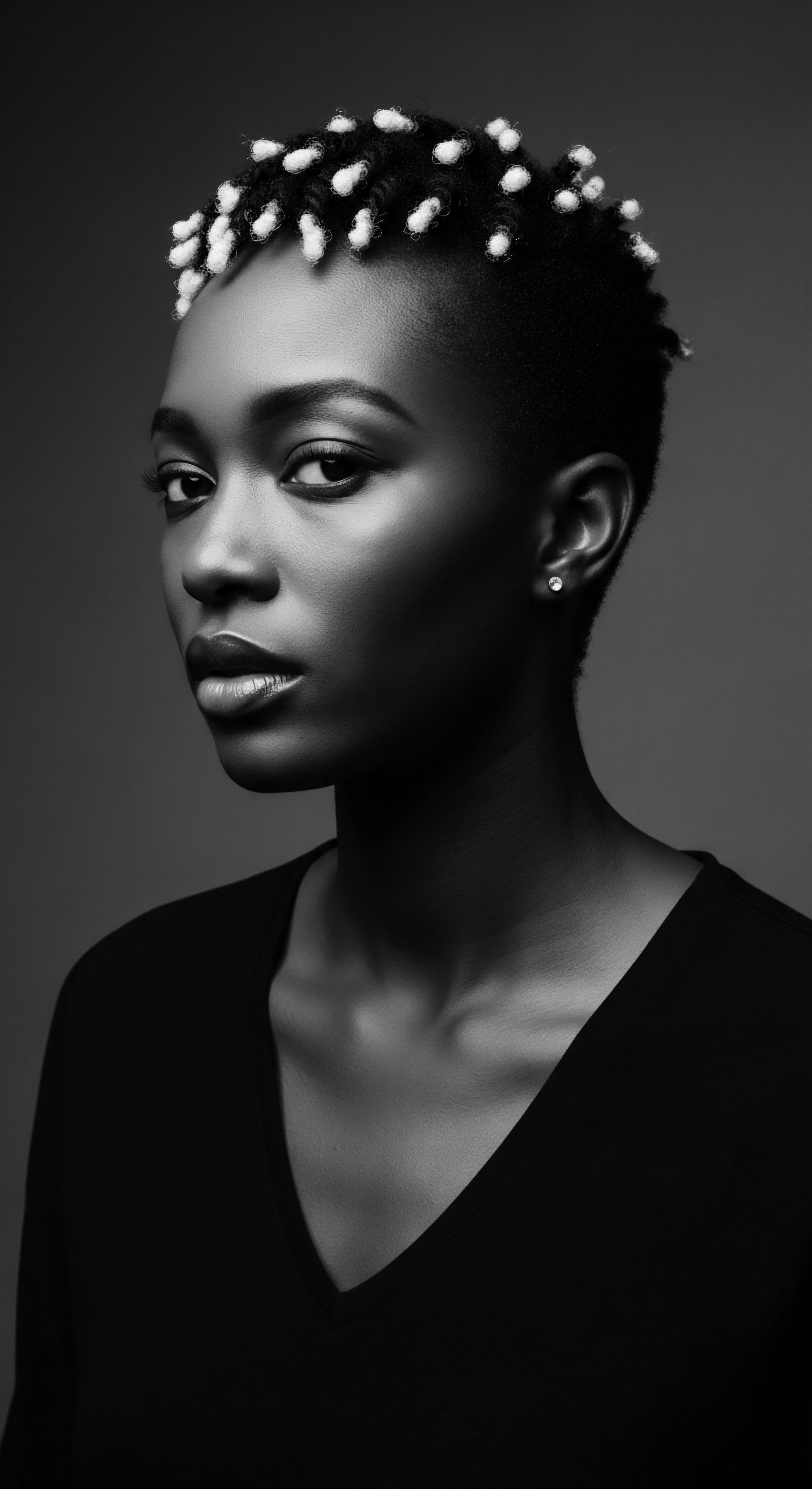
Academic
The “Crown Significance,” from an academic standpoint, represents a multifaceted conceptual framework that dissects the profound cultural, psychological, and biological implications of textured hair, particularly at the scalp’s apex, within societies shaped by Black and mixed-race heritage. This scholarly delineation moves beyond simplistic interpretations, exploring how hair, as a primary physical attribute, functions as a locus of embodied knowledge, a site of historical contestation, and a dynamic medium for expressing individual and collective identity. It scrutinizes the complex interplay between indigenous reverence for hair, the systematic devaluing of Black hair during periods of oppression, and its subsequent reclamation as a potent symbol of agency and cultural resilience.
The designation of the head as the “crown” in African cosmology, as elaborated by scholars in the field of anthropology and cultural studies, finds its roots in the belief systems of numerous pre-colonial African societies. For the Yoruba people, the head, or Orí, is not merely a physical structure; it is considered the dwelling place of one’s destiny and spiritual essence. Beautifying the hair, therefore, assumes a sacred dimension, becoming an act of honoring one’s inherent purpose and fostering a connection to the divine. (alteculture.com, 2025; WordPress.com, 2020).
This ontological weight placed upon the hair at the scalp’s summit transforms it into a profound semiotic device, conveying intricate social and spiritual narratives. Adetutu Omotos, in a 2018 paper, compellingly argued that hair in ancient African civilizations signified family history, social class, spiritual connection, tribal affiliation, and marital status. (Omotos, 2018; Gale Review, 2021). This scholarly observation grounds the Crown Significance in empirical historical understanding, demonstrating its deep-seated importance.
The deliberate efforts to eradicate the Crown Significance during the transatlantic slave trade and subsequent colonial rule serve as a stark empirical example of its power. The forced shaving of heads upon arrival in the Americas, for instance, was a calculated act of psychological warfare designed to strip enslaved Africans of their ancestral connections and dismantle their sense of self. (Black Hair, 2023; Afriklens, 2024). This historical trauma left an indelible mark on the collective consciousness, leading to generations internalizing negative stereotypes about their natural hair.
This phenomenon, often termed “texturism,” involves a preference for looser, straighter hair textures, reflecting an insidious legacy of internalized racism within the Black community. (Black Hair, 2023; Psychology Today, 2023).
The academic view of Crown Significance unpacks how historical oppression targeted hair as a cultural battleground, revealing its integral role in identity and resistance.
However, the indomitable spirit of cultural preservation led to hair becoming a clandestine medium for resistance and identity assertion. The ingenious use of cornrows by enslaved people in Colombia to embed maps for escape routes offers a compelling case study of this transformative adaptation of Crown Significance. (Ancient Origins, 2022).
This historical account, far from being a mere anecdote, provides critical insight into the adaptive ingenuity of human culture under duress. It highlights hair’s capacity to transcend its biological function and become a dynamic vehicle for survival, community cohesion, and the transmission of vital information across hostile landscapes.
The psychological ramifications of hair discrimination, a direct descendant of this historical devaluation, represent a significant area of contemporary inquiry. Research consistently demonstrates that Black women, in particular, face disproportionate pressure to conform to Eurocentric beauty standards in academic and professional settings, often resorting to chemically straightening their hair to avoid discrimination. (Maharaj, 2025; Clarke-Jeffers, 2024; Taylor & Francis Online, 2024). This constant negotiation of self-presentation in the face of societal bias contributes to heightened stress, negative self-image, and cultural disconnection.
A study published in Health Psychology Report by Clarke-Jeffers et al. (2024) specifically explored Black women’s experiences with alopecia, revealing that hair loss posed additional challenges due to the cultural importance of hair and the psychological impact of navigating “who and what I am” when processing their new identity. This research underscores that hair, for Black women, is deeply intertwined with confidence and cultural continuity, and its loss, whether biological or through forced alteration, represents a profound loss of self-expression. (Clarke-Jeffers, 2024). This empirical evidence reinforces the idea that the “crown” holds not just symbolic, but tangible psychological weight within the Black community.
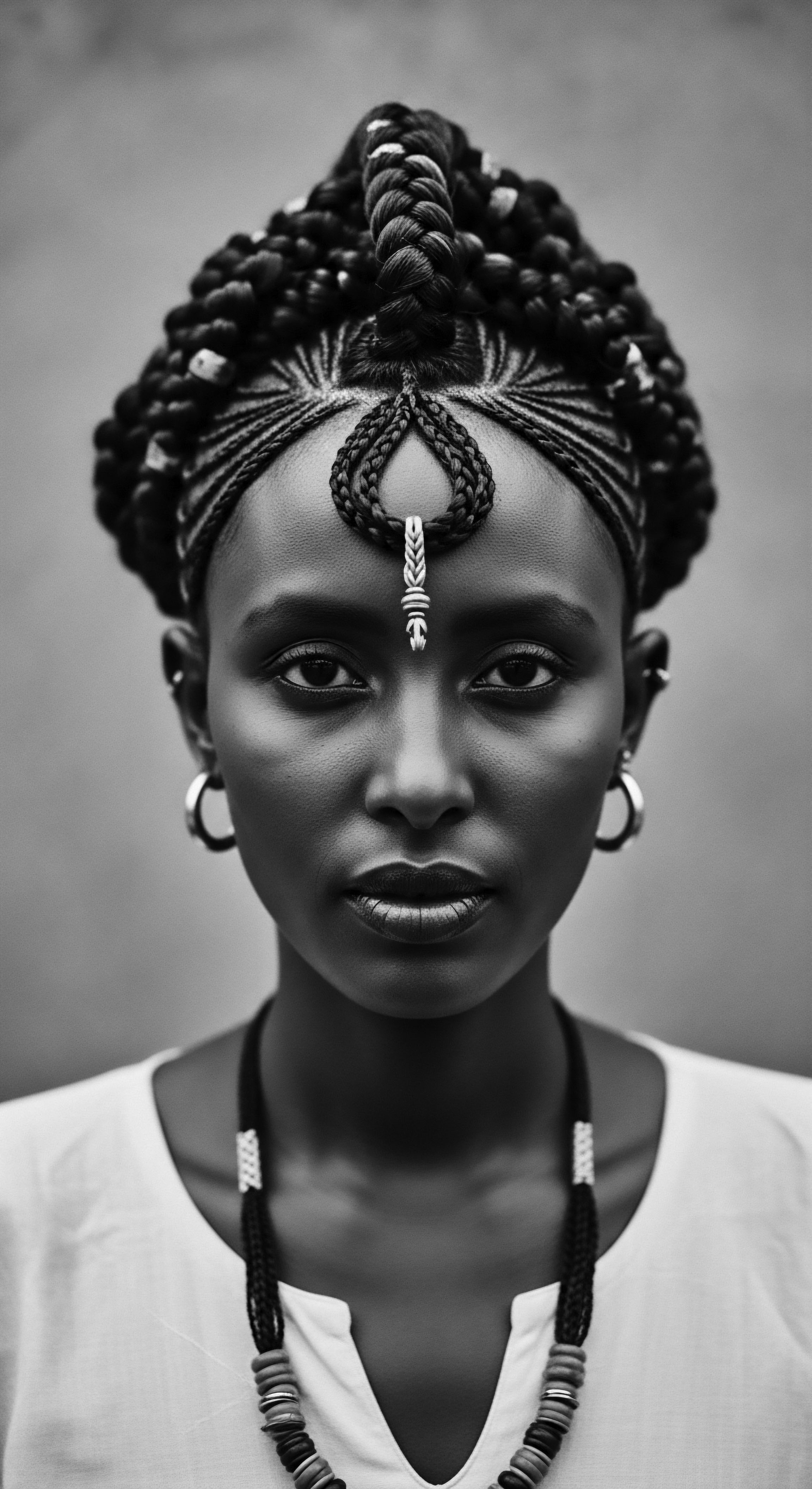
The Unbound Helix ❉ Modern Scientific Validation and Cultural Affirmation
From a scientific lens, the distinct helix of textured hair, with its unique elliptical cross-section and growth patterns, enables its remarkable versatility for styling. This biological reality underpins the historical artistry observed in various African hair traditions. Modern trichology and dermatology now increasingly acknowledge these structural differences, moving away from a Eurocentric understanding that once pathologized Black hair. The scientific understanding of hair’s anatomy and physiology now offers a framework for validating long-standing ancestral care practices.
The emergence of the natural hair movement in contemporary society is not merely a trend; it is a socio-cultural phenomenon rooted in ancestral wisdom and an affirmation of self-worth. It represents a conscious decision to reject beauty standards that deny the inherent beauty of textured hair, thereby reclaiming agency over one’s body and identity. The concept of “hair therapy” through online communities and blogs provides informal support for individuals navigating their natural hair journeys, illustrating the psychological resilience fostered through collective affirmation of the Crown Significance.
(PMC, 2023). This digital communal space mirrors the historical communal braiding sessions where stories and knowledge were shared, demonstrating the enduring power of collective support in affirming hair as a source of pride.
The continuation of traditional names for hairstyles, such as the Yoruba Sùkú (a raised, basket-like shape) or Ìpàkó-Elédè (hair braided backwards from the front), underscores the persistent cultural memory embedded within these practices. (Pulse Nigeria, 2022; FMACCE, 2024; alteculture.com, 2025). These linguistic markers serve as living testaments to the historical and ongoing cultural meaning woven into every strand. The Crown Significance, therefore, encapsulates not only the physical aspect of hair but also the enduring socio-linguistic and historical connections that define its deep meaning for Black and mixed-race communities globally.
- Yoruba Culture ❉ The Orí (head) is the seat of destiny, and hair rituals are acts of honoring one’s fate. (alteculture.com, 2025)
- Maasai Traditions ❉ Young warriors’ distinctive hairstyles symbolized strength and bravery, marking rites of passage. (Afriklens, 2024)
- Zulu Practices ❉ Married women wore intricate headdresses and wigs, like the Isicholo, signifying identity, status, and respect for their in-laws. (Valerie Hector, 2023; Kruger National Park, 2018; African Culture, 2011).
- Ancient Egyptian Styles ❉ Wigs and braids denoted social status and religious beliefs. (Khumbula, 2024)

Reflection on the Heritage of Crown Significance
The journey through the intricate layers of Crown Significance reveals a narrative as rich and varied as the textures of hair itself. From the very first strand to the complex styles that speak volumes without uttering a single word, the hair of Black and mixed-race communities has always been more than a biological phenomenon; it is a living chronicle. This profound reality, spanning continents and centuries, reminds us that heritage is not a static concept relegated to dusty history books, but a vibrant, breathing entity carried in every curl, every coil, every loc.
Reflecting upon this enduring legacy, one discerns that the Crown Significance is a continuous dialogue between past and present, a conversation whispered through generations of care, creation, and unwavering self-acceptance. It speaks to the human spirit’s extraordinary capacity for resilience, for transforming acts of suppression into statements of glorious self-expression. The tender thread of ancestral wisdom, often passed through the intimate act of a mother braiding a child’s hair, or friends sharing moments of communal care, forms an unbroken line of connection, a testament to the power of shared experience and inherited knowledge.
As we look to the future, the Crown Significance stands as a guiding star. It encourages us to not only appreciate the profound beauty and scientific marvel of textured hair but also to honor the stories it tells, the history it embodies, and the spiritual energy it holds. It is a powerful reminder that our hair, in all its unique expressions, truly is a crown, a regal adornment gifted by ancestors, forever linking us to a lineage of strength, creativity, and boundless beauty. This enduring symbolism calls us to recognize the deep spiritual and cultural meaning embedded within every strand, prompting a reverence that transcends transient trends and grounds us in the eternal wisdom of our heritage.

References
- Afriklens. (2024). African Hairstyles ❉ Cultural Significance and Legacy.
- alteculture.com. (2025). “Crowning Glory ❉ Edirin John Duvwiama’s Ode to Yoruba Hair Artistry.”
- Ancient Origins. (2022). African Slaves Used Braids to Communicate Escape Routes in Colombia.
- Clarke-Jeffers, P. (2024). “I am now being who I am and I’m proud of it” ❉ Hair related personal and social identity and subjective wellbeing of older Black women in the UK. Health Psychology Report, 12(2), 154-165.
- Creed & Cloth. (2024). Our Hair, Our Crown ❉ The Cultural Significance of a Powerful Metaphor.
- ELLE. (2020). A Brief History Of Black Hair Rituals.
- Fashion with Ibilola. (2020). History of Cornrows ❉ Yorùbá Edition.
- FMACCE. (2024). Hairdo.
- The Gale Review. (2021). African Hairstyles – The “Dreaded” Colonial Legacy.
- Khumbula. (2024). A Crowning Glory ❉ Hair as History, Identity, and Ritual.
- The Kurl Kitchen. (2024). The Cultural Significance Of Natural Hair In Different Communities.
- Maharaj, C. (2025). Beyond the roots ❉ exploring the link between black hair and mental health. Research.
- Nuevo Noir. (2024). The history of Afro hair.
- Pulse Nigeria. (2022). 5 Yoruba traditional hairstyles and their significance.
- Psychology Today. (2023). The Politics of Black Hair.
- WordPress.com. (2015). Rites of Passage Expressed Through Hair.
- Valerie Hector. (2023). Zulu Beaded Sangoma Headdresses & Wigs.
